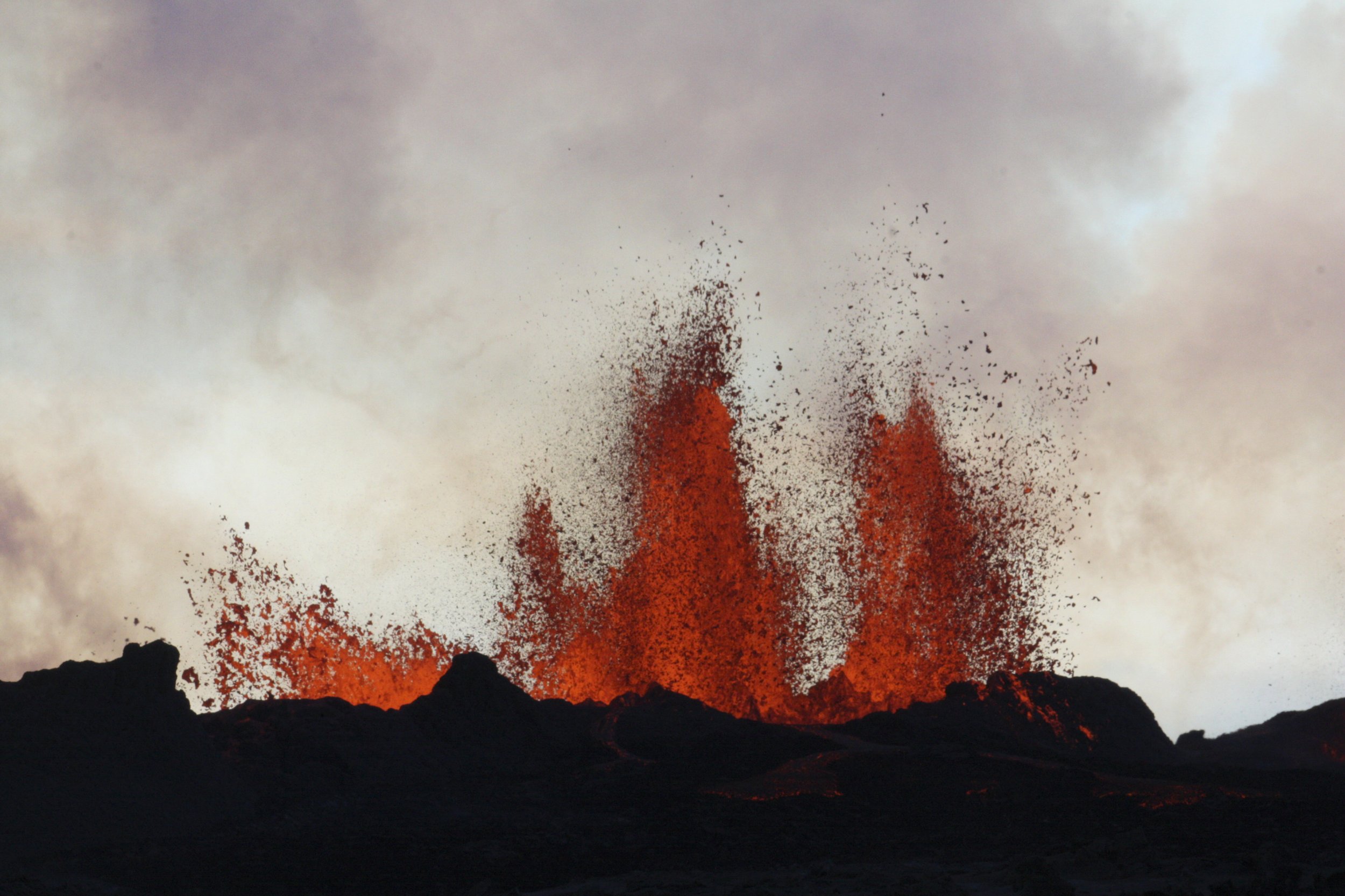
This article was originally published on The Conversation. Read the original article.
Iceland is about to tap into water as hot as lava. Several kilometers below ground, a drilling rig named Thor will soon penetrate the area around a magma chamber, where molten rock from the inner Earth heats up water that has seeped through the seafloor. This water—up to 1,000 degrees Celsius and saturated with corrosive chemicals—will eventually be piped up to the surface and its heat turned into usable energy.
It is a huge engineering challenge, and one that may usher in a new age of geothermal power production. Existing geothermal projects around the world need waters heated to less than 300 degrees Celsius, so why go to this extra effort and expense?
The answer is simple: water at the most extreme temperatures exists in a state described as "supercritical", where it behaves as neither a true liquid, nor a true gas, and is capable of retaining a phenomenal amount of energy. Supercritical water can generate up to ten times more power than conventional geothermal sources.
Iceland is a nation built on about 130 volcanoes resting above a divergent plate boundary that brings a continuous supply of hot, fresh magma up from the mantle just a few kilometres below. Icelanders have capitalized on this, and now generate more than a quarter of their electricity through geothermal, accessing boiling temperature water within two kilometers of the surface.

Iceland is happy to exploit its unusual geology. Jose Arcos Aguilar / shutterstock
The Iceland Deep Drilling Project (IDDP) was set up to find out what happens at depths below four kilometers in the Icelandic crust. In 2009, during their first drilling leg, they accidentally hit a magma pocket, and eventually stabilized the system to create the hottest steam ever produced in geothermal exploration: 450 degrees Celsius.
The second borehole now being drilled aims to tap the deep circulating water that penetrates the rock around a magma chamber below the Reykjanes peninsula near Reykjavik.
Follow the volcanoes
The embarrassment of geothermal riches on offer in Iceland is unusual, but by no means unique. Indeed, while the country has one of the highest geothermal electricity productions in terms of total energy share, it is neither the highest, nor is it in the top five countries for total geothermal capacity. In fact, the countries in the top five may come as a surprise.
The absolute biggest geothermal electricity producer in the world is the US, with around 3,450 MW of capacity in 2015, largely centred in California (a typical nuclear power station produces around 1,000 MW). Next up are the Philippines and Indonesia, at 1,870 and 1,340 MW respectively. Mexico and New Zealand trail at a little over 1,000 MW each, and Iceland (665 MW) comes in seventh behind Italy (916 MW).

Geothermal energy will usually be found near active volcanoes. Eric Gaba, CC BY-SA
Volcanoes are the common factor in the geothermal resources of all these countries. The US has also utilized the enormous San Andreas fault zone and its ability to conduct heat and fluids through the crust.
In search of the perfect geothermal site
For geothermal energy to succeed there must be heat, it must be accessible, and you must be able to move water around it. These three simple requirements can be difficult to find together.
Across most of the planet the hot material is simply too deep down to be economically within reach. The temperature of the Earth's crust generally increases by 25 degrees Celsius for every 1 kilometer depth; for geothermal to be economical that value must be nearer 50 or even 150 degrees Celsius per kilometer. That means you need to be near something geologically unusual: either thinned crust (so you're closer to the hot mantle), or features such as plate boundaries or volcanoes that can direct heat or magma toward the surface.
If that condition is met you must still be able to move water around. Rocks are not all alike, as some can allow water to easily flow through the pores and boundaries between grains, while others are more like a barrier. If water cannot flow to the borehole then it cannot be brought to the surface.
If the hot area doesn't have any natural water then engineers can pump some down. However, if the rocks prevent it flowing and dispersing then the water will simply cool the area immediately around the borehole, making it pointless in geothermal terms.
As with gold, rare-earth elements or good farmland, the geology of an area controls access to this valuable resource. Anywhere with active volcanoes could potentially benefit from the high temperature geothermal exploration being pioneered by the IDDP. That includes every country around the Pacific Ring of Fire—an opportunity perhaps to extract some benefit from the volcanoes that dot their landscapes.
Pete Rowley is a Senior Scientific Officer, Earth Science at the University of Portsmouth.
Uncommon Knowledge
Newsweek is committed to challenging conventional wisdom and finding connections in the search for common ground.
Newsweek is committed to challenging conventional wisdom and finding connections in the search for common ground.
About the writer
To read how Newsweek uses AI as a newsroom tool, Click here.








